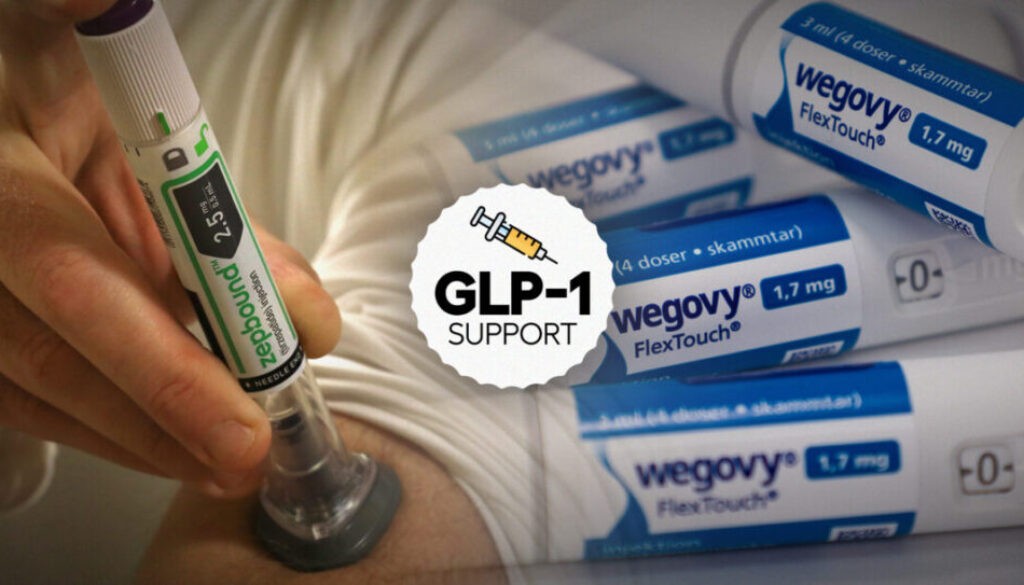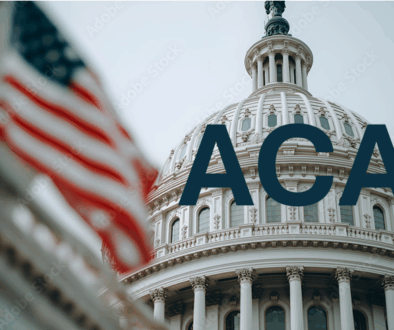Insurance companies scrambling to support need for GLP-1 drugs

The overwhelming popularity of GLP-1 drugs – what President Trump calls “the fat shot” – has insurance companies scrambling to satisfy consumer access to the treatments while at the same time reining in their exorbitant costs.
The surging demand—and high cost—of GLP-1 drugs like Ozempic, Wegovy, and Mounjaro, originally developed for diabetes but now widely used for weight loss, presents a complex balancing act for insurers to control near-term drug costs and manage long-term health outcomes.
“These innovative drugs, which can have a meaningful impact on people’s health, were launched at prices that pressured our clients’ budgets,” said David Joyner, president and chief executive officer of CVS Health.
On the one hand, insurers recognize the potential for GLP-1 drugs to reduce costly chronic conditions, but on the other, are wary of the sheer scale and cost of widespread adoption.
Their current strategy is to contain near-term expenses while waiting for clearer long-term data and possible price competition (including generics or biosimilars).
But waiting might not he the best strategy while interest in the drugs explodes. GLP-1s now represent about 3% of many consumers’ total healthcare costs. The “shots” are being subscribed to their original application for diabetes, but also weight loss, sleep apnea, and other indications on the horizon.
GLP-1 drugs: ‘Once in a generation’ treatments
“These treatments have been called once in a generation, and we all know they’re changing lives,” said Brian Evanko, president and chief operating officer of The Cigna Group. “By 2030, we expect the market size to exceed $100 billion in the U.S.”
It is estimated that by then, 1 in 10 Americans will be on a GLP-1 medication.
“But the challenge of affordability, success, and clinical coordination for GLP-1 drugs in the U.S. remains,” Evanko said. “Scientists are looking for ways to manage the high cost of these medications while ensuring appropriate use. And patients want to access these medications at an affordable price point.”
Many insurers are narrowing eligibility for GLP-1 coverage to high-risk patients—typically those with Type 2 diabetes, or with a BMI over a certain threshold and a weight-related comorbidity (e.g., hypertension, sleep apnea). Prior authorization is common, and in some cases, insurers require documented evidence of other weight loss programs being tried and failed first.
Some plans offering tiered options
For employer-sponsored plans, some insurers are offering tiered options:
- Opt-in coverage: Employers can choose to cover GLP-1 drugs at an added cost.
- Limited coverage: Some plans offer short-term coverage (e.g., 6-12 months), with requirements for weight loss progress.
- Exclusion: Others exclude weight-loss indications entirely, citing sustainability concerns.
Blue Cross Blue Shield of Massachusetts said it is reducing coverage for GLP-1 drugs for weight loss, effective Jan. 1, 2026. The company will continue to cover these drugs for diabetes treatment and may offer large employers the option to keep weight-loss coverage. The decision is primarily driven by rising costs, with BCBS MA reporting a $400 million operating loss in 2024, partly due to spending on GLP-1 drugs. A spokesperson for Blue Cross Blue Shield of Massachusetts said that the drugs’ pricing’ is putting a “big burden” on employer customers.
Some insurers are exploring value-based contracts with drugmakers. These arrangements tie payments to patient outcomes— weight loss benchmarks or reduced hospitalizations—rather than simply paying per prescription. This is still emerging but reflects a push for accountability on results.
Pharmacy Benefit Managers (PBMs) are playing a crucial role by negotiating hefty rebates with manufacturers in exchange for formulary placement. This helps offset the list price but does not always translate into lower costs for patients, especially those in high-deductible plans.
CVS partnering with Novo Nordisk
CVS this month announced it was partnering with Novo Nordisk to increase access to Wegovy for its members at more affordable prices. CVS said it can increase the power of GLP-1s by combining them with other lifestyle clinical support as part of its weight management program offered to its clients through Caremark. The company said this combination will allow members to achieve better outcomes and even greater weight loss than the pre-program results.
Additionally, CVS said it is the first retail pharmacy in the NovoCare pharmacy network. This will enable CVS to provide “convenient, safe and affordable access to Wegovy” for eligible patients at its 9,000 community health locations.
“Many US employers currently do not choose to provide benefit coverage for Zepbound or Wegovy,” said a CVS spokesman. “Now that we have negotiated lower prices for CVS Caremark clients, more of those employers will be able to provide coverage to their populations for GLP-1s for weight loss. Also, because we pass on more than 99% of the negotiated rebates from Novo directly to these employers, they can use these savings to lower member premiums, lower member copays, and/or broaden access and choice.”
The company said consumers will soon be able to purchase Wegovy at 9,000 CVS pharmacies for $499 – more than half off the list price they previously would have needed to pay at a community pharmacy for either Wegovy or Zepbound.
Cigna also announced a specialized GLP-1 pharmacy, which will soon go live for patients.
Price protection offered
Evernorth Health Services introduced EncircleRx, which includes a financial guarantee that protects plans from the sharply rising cost curve of GLP-1 drugs and supports patients through a clinically proven lifestyle modification program with behavior change support designed to help them achieve and maintain improved health outcomes.
“GLP-1s offer significant promise to millions of Americans living with obesity, diabetes and/or cardiovascular disease, but their unprecedented demand and high price tags are creating challenging downstream impacts, including fluctuating supply, inconsistent clinical support, and runaway cost trajectory,” said an Evernorth statement.
Evernorth recently expanded the program with the creation of a new program called Evernorth EnReachRx, a patient support clinical model enabled by pharmacies for dispensing GLP-1 prescription medications backed by “optimized drug spend management.”
Elevance Health introduced a comprehensive weight management program through its pharmacy benefit manager, CarelonRx. This program includes digital tools and medication management support for members prescribed GLP-1 drugs. The initiative aims to provide a “holistic” approach to weight management, combining pharmacotherapy with behavioral support.
UnitedHealthcare offers optional coverage for GLP-1 medications, primarily targeting clients or businesses that choose to include weight loss products in their plans. This coverage is subject to prior authorization and notification requirements, ensuring that only clinically appropriate cases are approved. The program is designed to meet regulatory requirements in specific states.
The prohibitive cost of the GLP-1 drugs was highlighted recently in Trump’s press conference announcing an executive order for drug companies to lower prices. He recounted an anecdote about an overweight businessman friend of his who paid $88 for “this damn fat drug” in London when in the U.S. he pays $1,300.
“What the hell is going on?” Trump said.
Ironically, the Trump administration recently rejected a plan by the Biden administration to expand access to the GLP-1 drugs by requiring Medicare and Medicaid to pay for them, a decision that will deny access to millions of people who otherwise cannot afford them.
© Entire contents copyright 2025 by InsuranceNewsNet.com Inc. All rights reserved. No part of this article may be reprinted without the expressed written consent from InsuranceNewsNet.com.
The post Insurance companies scrambling to support need for GLP-1 drugs appeared first on Insurance News | InsuranceNewsNet.





